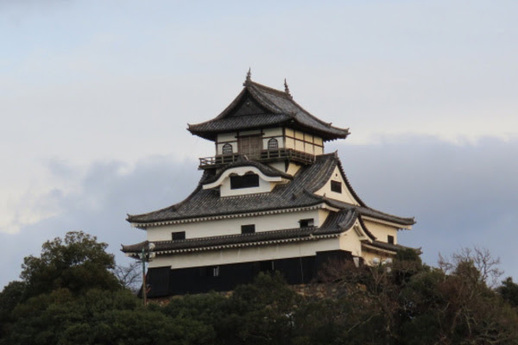2024.06.27
伝検通信(メルマガ)週刊メールマガジン「伝検通信」 第13号
週刊メールマガジン「伝検通信」第13号をお届けします。
今号は、伝統工芸品の販路拡大や情報発信を強化している香川県の取り組みです。
「クイズで肩慣らし」は前回クイズの答え・解説と、建築・庭園・美術分野からの出題です。
7月末までにメルマガ登録した方の中から、抽選で100人に公式テキスト(https://bookpub.jiji.com/book/b648563.html)をプレゼントするキャンペーンも引き続き実施中です! ぜひお近くの方にメルマガ登録をご案内ください。
目次
・ インバウンド起爆剤に=工芸品、首都圏で販路拡大―香川県=
・ 「クイズで肩慣らし」第13回(建築・庭園・美術)=「現存天守」
・ 伝検協会だより
インバウンド起爆剤に=工芸品、首都圏で販路拡大―香川県=

羽田空港内のショップで販売されている「讃岐かがり手まり」(
香川県は伝統的工芸品を含む県産品について、首都圏での販路拡大や情報発信を強化している。県関係者、生産者、流通業者などから構成される「かがわ県産品振興機構」(高松市)を中心に、羽田空港(東京都大田区)内の工芸品セレクトショップなどと連携。インバウンド(訪日客)に人気の高い「讃岐かがり手まり」「香川漆器」「丸亀うちわ」などを積極的にアピールしていく。
◇官民連携で取り組み強化
「最大の課題は販路拡大」と見定めるのは、同振興機構販路開拓担当の松本拓人さん。香川県は、県の伝統的工芸品として、国指定の「香川漆器」「丸亀うちわ」を含む37品目を指定しているが、職人らを取り巻く環境は厳しい。担い手の高齢化、後継者不足に加え、大消費地である首都圏から遠く知名度が高くないことなどが理由だ。
県は2013年に、官民のノウハウを合わせ、販路拡大や情報発信の強化を図るため、同振興機構を設立。評議員や理事には県、農業・漁業団体、商工会議所、大学などの関係者が名前を連ねる。
◇起爆剤はインバウンド
日本経済のコロナ禍からの回復や円安基調を踏まえ、販路拡大の起爆剤と位置付けるのが、インバウンド向けを狙った首都圏のセレクトショップとの連携だ。羽田空港第3ターミナル内に23年12月にオープンした「JAPAN MASTERY COLLECTION(JMC=ジャパンマスタリーコレクション)」には、多くの香川県の工芸品が並ぶ。
日本空港ビルデングが公表した羽田空港旅客ターミナル利用実績によると、23年度の外国人利用客は約1037万人と前年度(約307万人)から3.4倍と大幅に増え、コロナ禍前の18年度(約823万人)の水準も上回った。JMCの買い物客も95%がインバウンドという。
◇観光客増加も期待
JMCを運営する羽田未来総合研究所(東京都大田区)地方創生事業部の中村良枝さんは色とりどりの絹糸を使って紋様をあしらう讃岐かがり手まりについて、「外国人に非常に人気がある。華やかで、日本らしさを感じているようだ」と話す。実際に、讃岐かがり手まり保存会(高松市)によると、JMCでの取り扱いが始まって以来、手まりの販売個数は4月までの5カ月間で前年の同じ時期と比べ約2倍に伸びたという。
松本氏はJMCとの協業について、「インバウンドは富裕層も多い。円安効果もあり、工芸品の売り上げも好調だ」と手ごたえの笑顔を見せる。その上で「工芸品を通じて香川県や高松市を知った外国人が、次の機会に旅行で県や市を訪れてくれるような流れを作りたい」と強調。香川、岡山両県の瀬戸内海の島々などで2025年に開催される「瀬戸内国際芸術祭」もにらみ、観光面への波及効果にも期待を寄せている。
「クイズで肩慣らし」第13回(建築・庭園・美術)=「現存天守」
~伝検公式テキスト(9月1日刊行予定)のジャンルごとに出題します~

現存する日本最古の天守「国宝犬山城」
第13回問題:日本城郭協会は2006年に「日本100名城」
【前回の答えと解説】
問題:歌舞伎の「役者文様」は、
答え:三枡文様(みますもんよう)
解説:大中小の枡を入れ子にして、
伝検協会だより
▼6月23日、岡山市の能楽堂ホールtenjin9で開かれたシンポジウム「和の文化・和の芸術を語る会」(主催・岡山の歴史と未来を考える会)で、トークセッションのコーディネーターを務めた地元岡山県第1区選出の逢沢一郎衆議院議員が「伝検」を紹介し、来場者に検定試験の受験を勧めてくれました。この場を借りて感謝申し上げます。逢沢議員は伝統的工芸品産業振興議員連盟の会長を務めるなど、日本の伝統文化・産業の振興に非常にご熱心で、伝検も応援してくれています。
▼日本伝統文化検定協会のメールマガジン「伝検通信」登録キャンペーンの記事が6月19日付の京都新聞朝刊9面に掲載されました。7月末までに登録した人の中から、抽選で100人に「伝検公式テキスト」(9月1日刊行予定)をプレゼントします。既に登録していただいている皆さまは、もちろんキャンペーン対象です。当選者にはメールを送付しますので楽しみにお待ちください。
公式テキスト
https://bookpub.jiji.com/book/b648563.html

編集後記
伝検通信第13号をお届けしました。私は香川に行く度に、定番の讃岐うどんや骨付鶏につい引かれます。友人に教えてもらいましたが、県産小麦「さぬきの夢」を使った讃岐うどんは、今年からドバイへの売り込みが始まるなど海外展開中とのこと。ちなみに、伝検協会理事長の境は20代の頃、時事通信記者として高松支局に赴任していました。今号の記事を読んで「当時は伝統文化に対する関心がほとんどなく、香川県の貴重な工芸品に触れる機会を逸してしまったのが悔やまれます」と反省しきりでした 。
カテゴリー: 伝検通信(メルマガ)





